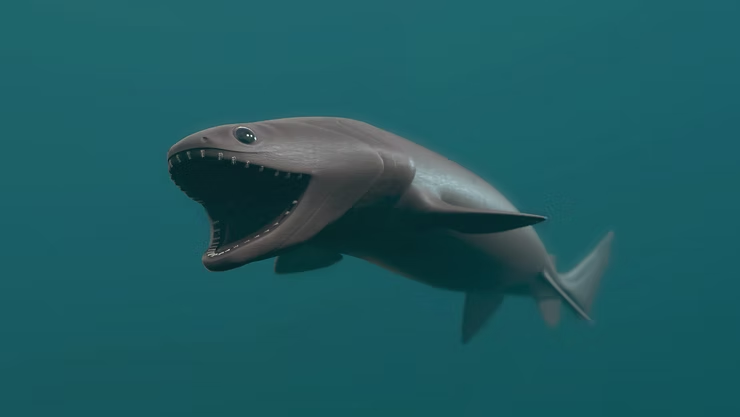The Mysterious Frilled Shark
The frilled shark is often described as a living fossil, a rare deep-sea dweller that fascinates scientists and ocean enthusiasts alike. With its eel-like body, needle-shaped teeth, and frilly gill slits, it represents one of the ocean’s most unusual predators. Adapted to survive at depths of up to 1,500 meters, this ancient species reminds us of how much of the ocean remains unexplored.
Unique Features and Adaptations
- Frilly gill slits wrapping around its throat for enhanced respiration.
- An elongated, eel-like body that allows agile movements in the deep sea.
- 25 rows of backward-facing, trident-shaped teeth designed to grip prey securely.
These features allow the frilled shark to lunge at squid, fish, and even smaller sharks with remarkable precision.
Habitat and Behavior
Frilled sharks inhabit continental slopes and outer shelf regions, often lurking in the ocean’s twilight zone. They prefer to stay hidden, ambushing unsuspecting prey. Despite their menacing appearance, they pose no threat to humans, as their elusive nature keeps them far from human contact.
- Inhabits depths ranging from 50 to 1,200 meters.
- Diet includes squid, bony fish, and other sharks.
- Elusive and rarely encountered by divers or researchers.
Conservation Concerns
While not currently listed as endangered, frilled sharks face risks due to human activity. Overfishing and deep-sea trawling can inadvertently harm their populations. Unfortunately, limited data makes it difficult to assess their numbers and vulnerability.
- Bycatch in deep-sea fisheries is a potential threat.
- Habitat degradation from trawling affects deep-sea ecosystems.
- Scarce research limits targeted conservation strategies.
Other Rare and Peculiar Sea Creatures
Red Handfish
The red handfish, found near Tasmania, is critically endangered and notable for its unusual way of moving. Instead of swimming efficiently, it “walks” along the seabed using its pectoral fins like hands. Each sighting is rare, making habitat protection crucial for its survival.
Sea Pig
Sea pigs are deep-sea cucumbers that scavenge organic matter on the ocean floor. With leg-like appendages and gelatinous bodies, they thrive in extreme pressure. These creatures often gather in large groups, playing an important role in recycling nutrients in the deep ocean.
Deep-Sea Dragonfish
Dragonfish are small but formidable hunters, equipped with bioluminescent organs that lure prey in pitch-black waters. Though fearsome-looking with sharp teeth, they are often no longer than a pencil, proving that size is no measure of survival in the deep sea.
Conclusion
The frilled shark and its fellow deep-sea neighbors reveal a world that remains largely hidden from human eyes. From the eerie glow of dragonfish to the slow “walk” of the red handfish, each species highlights the ocean’s boundless creativity. Protecting these habitats ensures that future generations can continue to discover and marvel at these extraordinary creatures.

